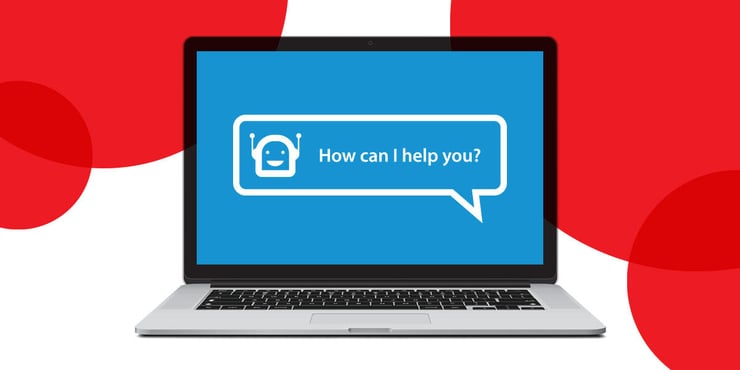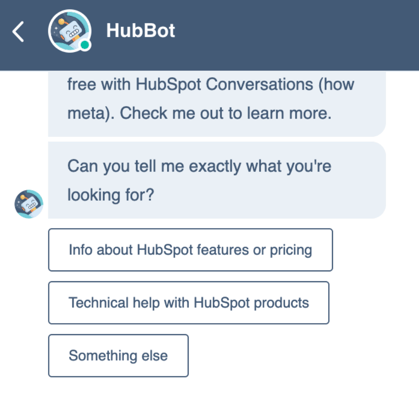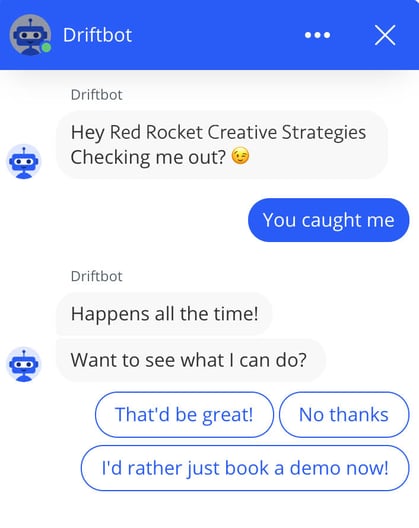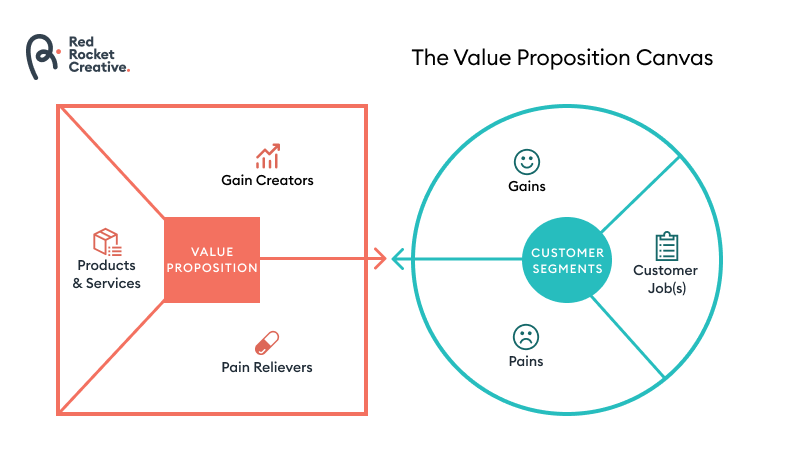The proliferation of content across vendor sites, social media, and review sites means buyers have more knowledge and buying power than ever.
Companies can either resist this reality, and continue business as usual, or they can evolve and meet buyers where they are—online, researching their purchase.
One successful way to meet buyers “where they are” is by implementing chatbot technology on your website. The benefits of chatbots for businesses include:
- increasing the time visitors spend on your site
- converting more visitors into qualified leads
- encouraging more repeat website visits
Buyers benefit by having a better website experience, and feeling more valued by your company.
Curious about how a chatbot works?
Let’s dive into how chatbot technology can give buyers more of what they want, leading to increased brand loyalty, and even more customers for your business.
What Do Buyers Now Expect From Brands?

Whether you’re B2B or B2C, buyers now demand certain experiences from your company online. Let’s review a few of them now, and then I’ll show you how a chatbot can help you facilitate them on your website:
- User-focused website experiences. Buyers need to be able to find what they’re looking for on your site, quickly and easily. If they can’t, they’re likely to leave and land on a competitor’s site instead. Even worse, they might never come back: 88% of buyers are less likely to return to a site after a bad experience.
- Personable, authentic brand voice. Today’s buyers demand authenticity and “human-ness” from brands. 65% of customers say they’re emotionally connected to a brand that makes them feel like the company cares about them. If your brand voice doesn’t connect with people on a human level, they may feel alienated from your brand, potentially leading to decreased loyalty.
- One-to-one interaction. Buyers want more direct interaction with brands. They want to have conversations, rather than be on the receiving end of generic corporate messaging that may or may not be relevant to them. One-to-one interaction creates a more personalized experience, and lets buyers know you really care about them as humans.
So how can a chatbot help you create these positive experiences for your buyers? Let’s find out! But first…
What is a chatbot?

A chatbot is a piece of software that engages in two-way interaction with website visitors. There are two kinds of chatbots: basic chatbots and Artificial Intelligence (AI) chatbots.
Basic chatbots are generally more common. These types of chatbots start a conversation with site visitors by asking a question. Visitors then respond by choosing a response from different options provided.
The chatbot keeps the conversation going using previously configured questions and responses until the website visitor is satisfied with the information they have received.
AI chatbots are more complex. They understand language and intent, not just rules and commands. They can carry on more in depth conversations with people through a machine learning algorithm.
So which chatbot software should you use?
There's a lot out there. So go ahead and do some research, and see which one best fits your needs. Two popular platforms that offer chatbots are HubSpot and Drift.
Additionally, Facebook Messenger is a free chatbot that's powered by Wit.ai Bot Engine, a type of AI. You can use Messenger in a variety of ways within Facebook itself, and you can even add it to your website.
Ok. So how can a chatbot help you provide more satisfying experiences for your buyers? Let’s get into that now.
3 Ways Chatbots Improve the Buying Experience
1. Chatbots help buyers find the content they need, quickly
A chatbot can act as a guide for your website, helping visitors find what they’re looking for quickly and easily.
For example, a chatbot can ask about a person’s goal for visiting your site, and in response, provide relevant links that point them to the most helpful content. This content could be educational, like a blog post or white paper, or it could be a link to a case study, or pricing information.
(This is where having a solid content marketing strategy is key: if you don’t have enough content built out—like blogs, videos, white papers, and case studies—you could be missing out on an opportunity to give buyers what they’re looking for on your website.)
HubSpot’s “HubBot” is a great, straightforward example of how to guide visitors to the right area:

A chatbot can also ask visitors what industry they work in, and then point them to relevant pages on your website that speak directly to that industry, thereby creating a more personalized experience.
While a chatbot is providing this information, it can ask website visitors for their contact information where appropriate, thereby converting them into leads.
2. Chatbots can show off your brand personality
The best chatbots sounds like humans and engage in delightful interactions with website visitors. Some brands even create a character for their chatbot that represents their brand identity.
Drift’s website chatbot, for example, has made me smile on more than one occasion:

Chatbots can also be programmed to express themselves using visuals, like GIFs, videos, images or emojis—which mirror how real people tend to express themselves on chat.
Additionally, you can configure your chatbot to give empathetic responses where appropriate, which helps foster trust in the user. This makes your conversations with your customers more authentic and engaging.
3. Chatbots give buyers direct, two-way interaction with your company
Chatbots fall under the umbrella of conversational marketing, which is a strategy of developing one-to-one relationships with customers and potential customers at scale.
A chatbot will engage in conversational marketing by facilitating two-way interaction with buyers directly on your website. It will provide the buyer with a more personalized experience based on what they’re trying to accomplish.
The result is that buyers feel special, heard, and like they truly matter to your business.
Final Thoughts
There you have it! We’ve covered three ways that a chatbot can improve buyer experiences on your website.
If you’re ready to take your buyer experiences to the next level, consider implementing chatbot technology to meet them where they are, engage them one-to-one, and improve their relationship with your brand.
Don’t miss out on this opportunity to increase customer engagement and brand loyalty—better engagement translates to a stronger brand and healthier bottom line.
Next Step:
If you’re struggling with how to best engage your prospects and buyers online, we should talk. Click below to schedule a free strategy session with us, where we’ll:
- Discuss and better understand your challenges
- Go over some key tactics you can consider for success
- Delve into some ideas you can explore, either with us, or on your own
Holly Thomson
Digital Marketing Strategist Holly loves communicating with others, sharing information, and building connections. With creativity and technical skill, she uses her storytelling talents to communicate effectively with key audiences. One of her favourite things is helping clients meet their goals, whether that means increasing online influence, acquiring more leads, or growing a customer base.







